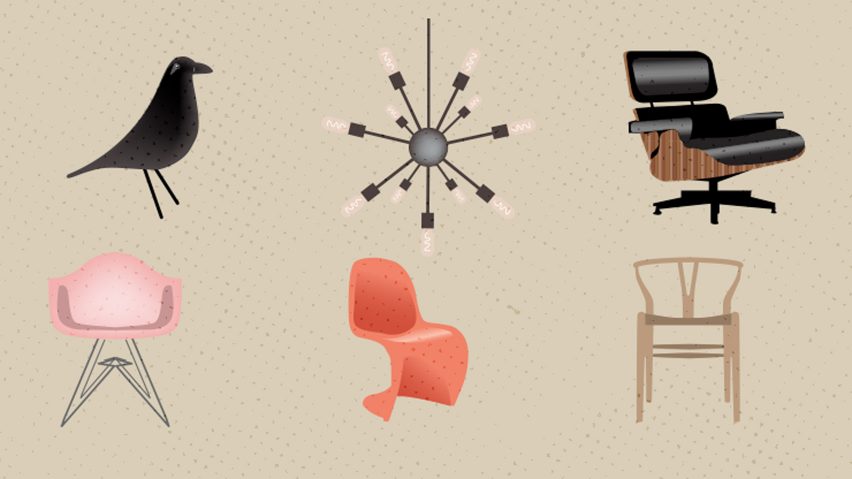American design retailer Death by Modernism has created an emoji set so that mid-century-design fans can send small pictures of works by Charles and Ray Eames, Eero Saarinen and Hans J Wegner.
Death by Modernism – which sells both white label mid-century furniture and paraphenelia related to the period – "emoji-fied" 12 designs for use on Apple's iOS.
"We made these emojis because we felt like Apple's iMessage furniture could use a little refresh," Death by Modernism founder Raj Haldar told Dezeen.
"But we also did it because, if you can't convey to your friend in a single image that it's your wish to go home and sit in an Eames Lounge Chair, then what is all this technology even for?".
A number of the Midcentury Emojis are modelled on works by industrial designers Charles and Ray Eames – such as the wooden Eames House Bird, La Chaise chair and the Eames Eiffel Chair.
The couple has also been recreated as emoji figureheads, with Charles adorning a bow-tie and Ray wearing her hair up in a ponytail.
Finnish-architect Eero Saarinen's white Tulip Table with its tapered stand also features in the set. Another standout is Eero Aarnio's 1960s Ball Chair, featuring a white shell and red inner lining.
Other designs include the Wegner Wishbone Chair, which Danish architect Hans J Wegner created in 1949 for Carl Hansen & Son, and a white light by George Nelson.
Nelson's billowed design, aptly called the Nelson Bubble Pendant Lamp, is accompanied by the American industrial designer's Sunburst Clock.
The S-shaped Panton Chair by Danish furniture designer Verner Panton, Sputnik Chandelier by Italian designer Gino Sarfatti and a Death by Modernism Gravestone are among the other creations.
The emoji messaging extension initially began as small images intended to represent emotions but have evolved to represent a range of items, including food, the weather and sports.
Recent additions to Apple's emoji suite is the addition of 13 inclusive designs such as prosthetic limbs, guide dogs and a hearing aid to better represent people with disabilities, while a breastfeeding mother and a woman in a hijab were added in 2017.
Google, which has its own set of emotion symbols, also fixed its burger emoji last year by swapping the placement of cheese from the bottom to the top.

